



Table of Contents
- What is Veener?
- Benefits of Using Veneer for Furnitures
- Types of Veneer Finishes available
- Common Uses of Veneer Finishes
- How to Maintain Veneers
- Specific Cleaning Products For Veener Finish Home Decor
- Faq's
Veneer finishes have been a staple in home decor for centuries, offering a unique blend of durability, versatility, and aesthetic appeal. By combining a thin layer of real wood with a sturdy substrate, veneers provide a cost-effective and low-maintenance solution for creating beautiful, high-end-looking surfaces. From traditional to modern designs, veneer finishes can be tailored to suit any style or budget, making them a timeless choice for homeowners seeking to elevate their living spaces.
What is Veener?
Veneer is a thin layer of wood that is bonded to a substrate material like plywood, MDF or particle board to create a durable and attractive surface for furniture and interior finishes. Veneers offer a cost-effective way to achieve the look and feel of real wood without the high cost and maintenance. They are available in a wide range of wood species, colors and grain patterns to suit any design style.
Benefits of Using Veneer for Furnitures
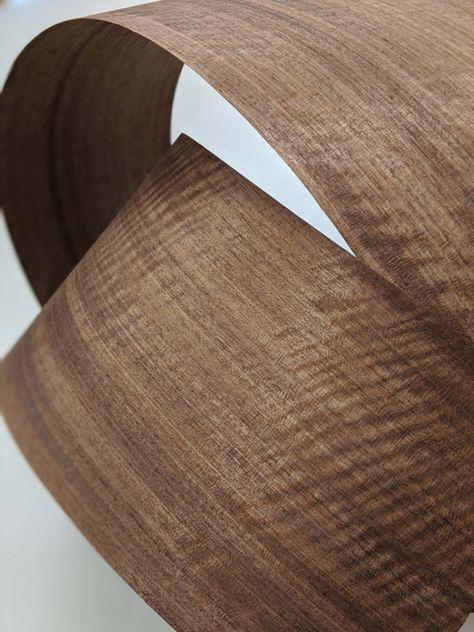 Benefits of using Veener, Pinterest
Benefits of using Veener, Pinterest
Cost Savings: Wood veneer is generally less expensive than solid wood, making it a more affordable option for many projects.
Customisation and Versatility: Veneers can be used to create unique designs and patterns by combining different species, grain directions, and matching techniques.
Durability and Strength: Veneers are often glued to a stable substrate, which prevents warping, splitting, and seasonal movement, making them more durable than solid wood.
Eco-Friendly: Wood veneers are considered a more sustainable option as they use only a thin layer of wood and can be recycled, reducing waste and the need for more trees to be cut.
Flexibility in Designs: Each veneer sheet is unique, allowing for endless design possibilities and the ability to create exclusive looks.
Increased Strength and Durability: Applying veneers to engineered woods like MDF or plywood can increase their strength and durability by protecting them from water damage and other environmental factors.
Non-Toxic: Wood veneers are a natural product and generally non-toxic, making them a healthier choice for indoor spaces.
Better Utilisation of Wood: Veneers help in better utilization of wood as they can be made from logs that would otherwise be wasted, reducing the need for more trees to be cut.
Aesthetics Like Natural Wood: Veneers provide aesthetics similar to natural wood at a lower cost, making them a popular choice for many interior design projects.
Maintenance and Repair: While veneers require more maintenance than solid wood, they can be polished periodically to maintain their appearance and are generally easier to clean.
These benefits make wood veneer a popular choice for furniture makers and interior designers looking to create high-quality, sustainable, and cost-effective designs
Types of Veneer Finishes available
Type of Veneer | Description | Pros | Cons |
Raw Veneer | Available in its natural state without additional processing or finishing | - Natural appearance | - Requires additional processing or finishing |
Paper-backed Veneer | Backed with paper, available in large sheets | - Easy to handle and work with | - Limited durability |
Phenolic Veneer | Made from phenolic resin, durable and resistant to heat and moisture | - Durable, resistant to heat and moisture | - Limited color options |
Laid-up Veneer | Made by layering multiple veneer sheets together | - Thicker and more durable | - Higher cost |
Reconstituted Veneer | Made by combining wood fibers with resin and other materials | - More durable and sustainable | - Limited natural appearance |
Natural Veneer | Made from natural wood, unique grain patterns and textures | - Unique grain patterns and textures | - Higher cost |
Engineered Veneer | Made by layering wood fibers with resin and other materials | - More durable and sustainable | - Limited natural appearance |
Special Veneer | Made from unique wood species or has special finishes or designs | - Unique appearance | - Higher cost |
Teak Veneer | Made from teak wood, durable and resistant to moisture | - Durable, resistant to moisture | - Higher cost |
Santos Veneer | Made from Santos wood, unique grain patterns and textures | - Unique grain patterns and textures | - Higher cost |
Oak Veneer | Made from oak wood, durable and resistant to moisture | - Durable, resistant to moisture | - Higher cost |
Walnut Veneer | Made from walnut wood, unique grain patterns and textures | - Unique grain patterns and textures | - Higher cost |
Maple Veneer | Made from maple wood, durable and resistant to moisture | - Durable, resistant to moisture | - Higher cost |
Cherry Veneer | Made from cherry wood, unique grain patterns and textures | - Unique grain patterns and textures | - Higher cost |
Common Uses of Veneer Finishes
Veneers are versatile and can be used in many applications throughout the home:
Accent Walls and Feature Walls
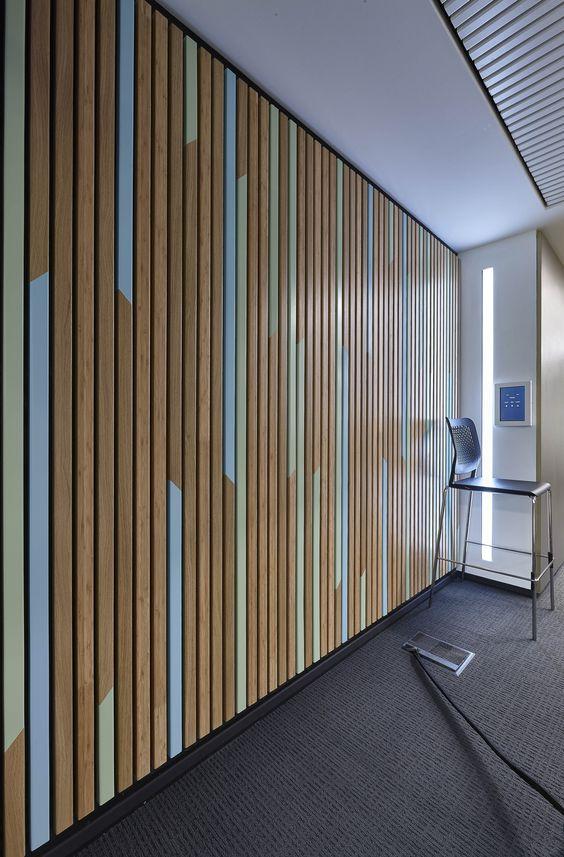 Bamboo Veneer Accent Walls, Pinterest
Bamboo Veneer Accent Walls, Pinterest
Veneered walls add warmth and visual interest to living rooms, bedrooms, and entryways. They can be used to create a focal point in a room, drawing attention to a specific area or design element. Accent walls can be made from various materials, including wood, stone, or metal, and can be designed to match the existing decor or create a contrasting look. Veneered walls can also be used to create a sense of depth and dimensionality in a room, making it feel more spacious and inviting.
Veneered walls can be used to create a statement piece in a room, such as a bold color or unique pattern. They can also be used to add texture and visual interest to a room, such as a wood grain or stone finish. Additionally, veneered walls can be used to create a sense of continuity in a room, such as matching the color and style of the walls to the furniture and decor.
Cabinets and Built-ins
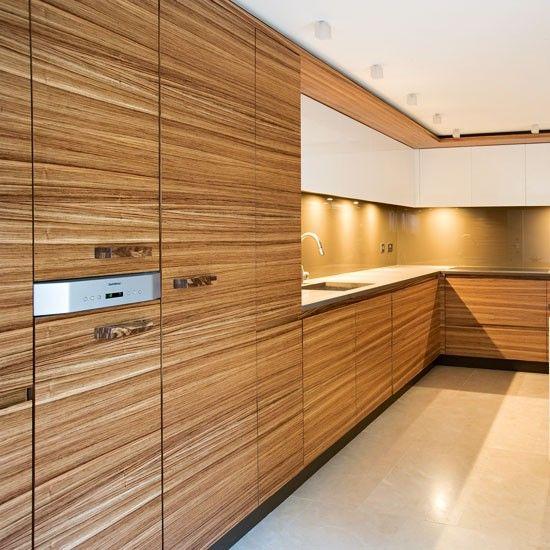 Veneer Finish Cabinets, Pinterest
Veneer Finish Cabinets, Pinterest
Veneer finishes are popular for kitchen cabinets, bathroom vanities, bookcases, and media centers. They provide a high-end look without the high cost of solid wood. Veneered cabinets can be designed to match the existing decor or create a contrasting look, adding visual interest to the room. Veneer finishes are also durable and easy to clean, making them a practical choice for high-traffic areas.
Veneered cabinets can be used to create a cohesive look in a room by matching the color and style of the cabinets to the walls and furniture. They can also be used to add a touch of elegance to a room, such as a high-gloss finish or ornate details. Additionally, veneered cabinets can be used to create a sense of continuity in a room, such as matching the style of the cabinets to the style of the furniture and decor.
Furniture
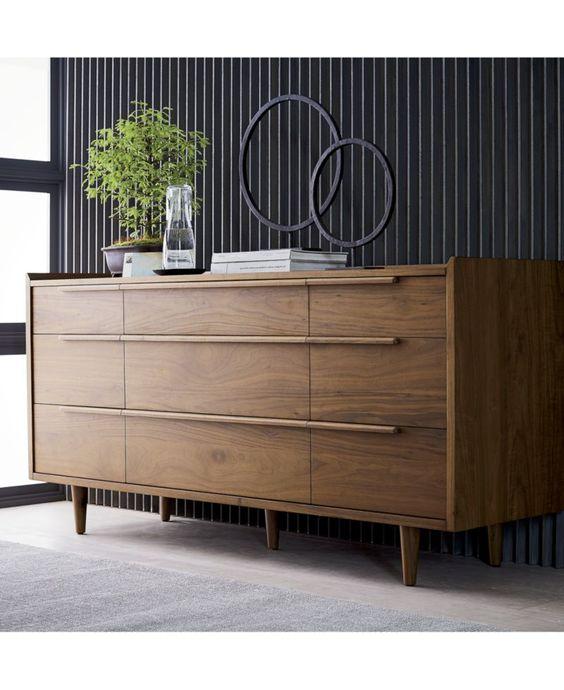 Veneer Finish Furniture, Pinterest
Veneer Finish Furniture, Pinterest
Veneered furniture pieces, such as tables, desks, dressers, headboards, and other furniture, can be designed to match the existing decor or create a contrasting look. Veneer finishes provide a high-end look without the high cost of solid wood. Veneered furniture can also be designed to be functional and practical, such as a veneered desk with storage compartments.
Veneered furniture can be used to create a cohesive look in a room by matching the color and style of the furniture to the walls and decor. They can also be used to add a touch of elegance to a room, such as a high-gloss finish or ornate details. Additionally, veneered furniture can be used to create a sense of continuity in a room, such as matching the style of the furniture to the style of the cabinets and decor.
Doors and Trim
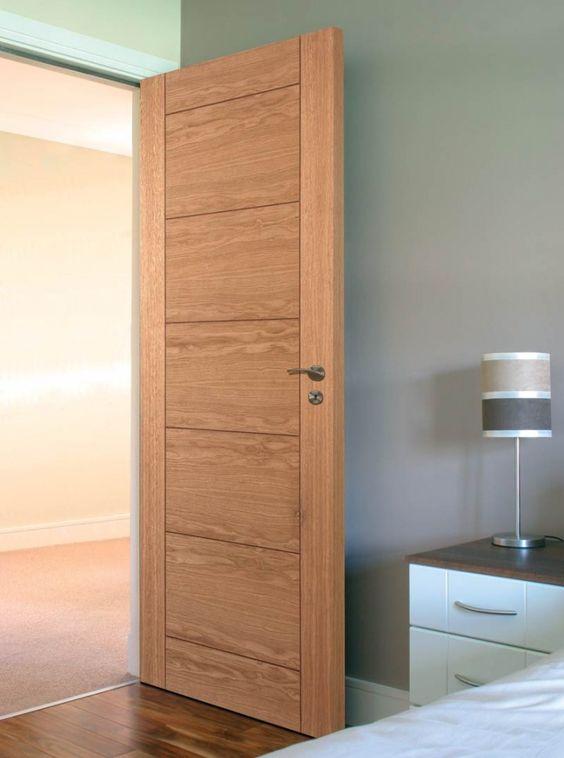 Veneer Finish Doors
Veneer Finish Doors
Veneer can be used to create decorative panels and moldings for interior doors and trim. Veneered doors and trim can be designed to match the existing decor or create a contrasting look, adding visual interest to the room. Veneer finishes are also durable and easy to clean, making them a practical choice for high-traffic areas.
Veneered doors and trim can be used to create a cohesive look in a room by matching the color and style of the doors and trim to the walls and furniture. They can also be used to add a touch of elegance to a room, such as a high-gloss finish or ornate details. Additionally, veneered doors and trim can be used to create a sense of continuity in a room, such as matching the style of the doors and trim to the style of the cabinets and furniture.
Countertops
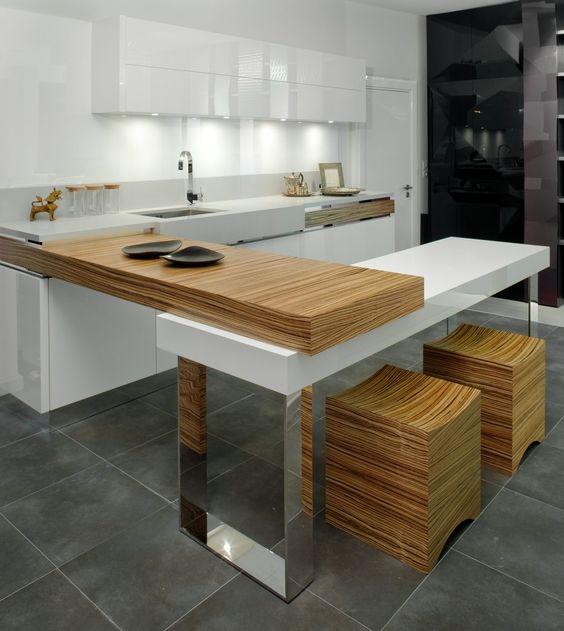 Zebra Veneer Finish Countertops
Zebra Veneer Finish Countertops
Veneer can be used to create unique and custom countertops for kitchens and bathrooms. Veneered countertops can be designed to match the existing decor or create a contrasting look, adding visual interest to the room. Veneer finishes are also durable and easy to clean, making them a practical choice for high-traffic areas.
Veneered countertops can be used to create a cohesive look in a room by matching the color and style of the countertops to the walls and furniture. They can also be used to add a touch of elegance to a room, such as a high-gloss finish or ornate details. Additionally, veneered countertops can be used to create a sense of continuity in a room, such as matching the style of the countertops to the style of the cabinets and furniture.
How to Maintain Veneers
 Wipe Spill Immediately On Veneer Finish
Wipe Spill Immediately On Veneer Finish
Avoid Direct Sunlight
Prolonged exposure to UV rays can cause fading and discoloration.
Wipe Up Spills Promptly
Moisture can seep under the veneer and cause damage if left sitting.
Use Coasters and Placemats
This prevents water rings and heat damage from hot dishes.
Clean with a Damp Cloth
Wipe in the direction of the wood grain using a mild soap and water solution.
Avoid Abrasive Cleaners
Harsh chemicals and scrubbing pads can scratch the surface.
Periodically Polish
Use a high-quality furniture polish to maintain the luster and protect the finish.
It is essential to follow these care instructions to maintain the appearance and longevity of veneered surfaces. Regular cleaning and polishing can help prevent damage and keep the veneer looking its best. Additionally, avoiding direct sunlight and using coasters and placemats can help prevent fading and discoloration.
Specific Cleaning Products For Veener Finish Home Decor
Mild Soap and Water: For regular cleaning, use a mild soap and warm water solution. This is effective for removing dirt and grime without damaging the veneer.
Microfiber Cloth: Use a microfiber cloth to clean the veneer, as it is gentle and effective at picking up dirt and dust.
Avoid Harsh Chemicals: Never use ammonia-based cleaners, wax products, or aerosol cleaners, as they can damage the finish and create a cloudy appearance.
White Vinegar: For more stubborn stains, a diluted white vinegar solution can be used.
Soap Flakes: Soap flakes can be used to clean wood veneer surfaces, especially for more thorough cleaning.
Oil Polish: For small scratches, oil polish can be applied to the affected area and rubbed with a soft microfiber cloth until the scratch is no longer visible.
Consult the Manufacturer: For more severe stains or damage, it is recommended to consult the manufacturer or a trained finisher for guidance on the best cleaning and restoration methods.
By following these guidelines, you can effectively clean and maintain your veneer surfaces without causing damage.
explore further
Latest from Contemporary ideas
More from Innovations
Resources
Dwello, for every home buyer, is a way to go from 'I feel' to 'I know', at no extra cost.




